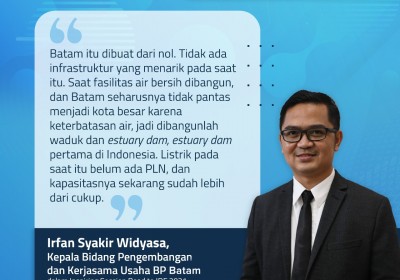Competitive Industrial Zones Require Effective Partnerships Between Stakeholders
July 13, 2021
JAKARTA – The President and Vice President have clearly outlined growth plans for the next few years through the National Mid-Term Government Plan (PJMN) 2020-2024, revolving around improving development strategies as well as attracting more investment and driving up production rates.
To achieve an economic growth target of around 5.7% to 6%, Indonesia would require Rp 35.2 to Rp 35.4 trillion in investment in between 2020-2024, with contributions from both foreign direct investment and domestic investment reaching 17.7%, or around Rp 5.6 to Rp 5.7 trillion.
Specialized Industrial Zones, or KI, can provide a solution to attract investment, but in order for it to be effective in doing so, collaboration is needed between various stakeholders such as government bodies, academics, communities and industry actors. Doing so will improve factors such as exports, technological development and implement environmentally friendly approaches.
"Stakeholders that I mentioned also include government bodies and institutions who must be able to formulate policies that can make Indonesia's investment climate to become more conducive. The Investment Coordinating Board (BKPM)'s role in this is to improve our ease of doing business rating, of which we currently sit 73rd in the world," the BKPM's deputy for capital investment Nurul Ichwan said during the Inspiring Session Road to Indonesia Development Forum (RIDF) webinar on Tuesday (29/6).
"Industrial zones should be built to be competitive. From there, investors will be interested to come and invest. Domestic investors can even lend themselves to partner with foreign investors to ease their entry and to navigate through the business climate," he added.
According to Setyono Djuandi Darmono, the chairman & founder of Jababeka Group, Indonesia is unique in that it has cheap land to build industrial zones on, yet still has poor quality infrastructure to take care of it, making it not as attractive to investors as zones in other countries.
He highlights Singapore's success in attracting investors to their industrial zones, which is greatly helped by factors such as convenience, security and political stability, despite their costs being the highest in the region.
"Even though Singapore's costs are higher than zones in other countries in the region, they can be successful because they offer investors comfort, convenience and security. They are able to offer what others couldn't," Darmono said.
Currently, the government is in the middle of developing a gas project in Bintuni. Bintuni is one of the projects that is being actively pushed by the government to take advantage of Papua's natural gas resources.
"The gas, we will use it to produce fertilizer and methanol, as well as other chemical materials. This project has the potential to use Papua's natural gas resources to help develop the economy in the region, to the point where investors in the petrochemical industry could see it as an option. Right now, a good example of this is the gas industry in Bontang, East Kalimantan," the Industry Ministry's (Kemenperin) director for upstream chemical industries, Fridy Juwono.
One of Indonesia's most successful industrial development stories is the development of Batam. Batam, located in the Riau Islands, was previously a small undeveloped island in the 1990s, with only 6,000 residents. It has since become one of Indonesia's most crucial industrial regions due to rapid development throughout the last two decades, with its infrastructure greatly mended, investments coming in from both domestic and abroad, resulting in prosperity, migration and the development of the education and tourism sectors.
"Batam was built from zero. There was absolutely no infrastructure to speak of in the 1990s. That is why the first thing that developers did was to erect a clean water treatment facility, to solve the island's water limitations. That lead to the construction of Indonesia's first estuary dam, which now provides electricity to the island," the head of the BP Batam's development and business cooperation division Irfan Syakir Widyasa.
Irfan added that for the next 3 years, Batam plans to add 2000 megawatts from renewable energy, further accommodating plans to move forward with more environmentally-friendly development approaches.
Indonesia’s Research Institutions Supporting the Development of the Electric Vehicle Industry
Indonesian Muslim Fashion and Cosmetics IKMs Shine at Dubai World Expo 2020
Govt Steps Up UMKM Transformation Efforts in the Midst of Pandemic Slowdown
Govt Encourages Promotion of IKM Products in Digital Era
Government Begins Developing Maritime Training Center in Makassar
Tweets by IDDevForum
